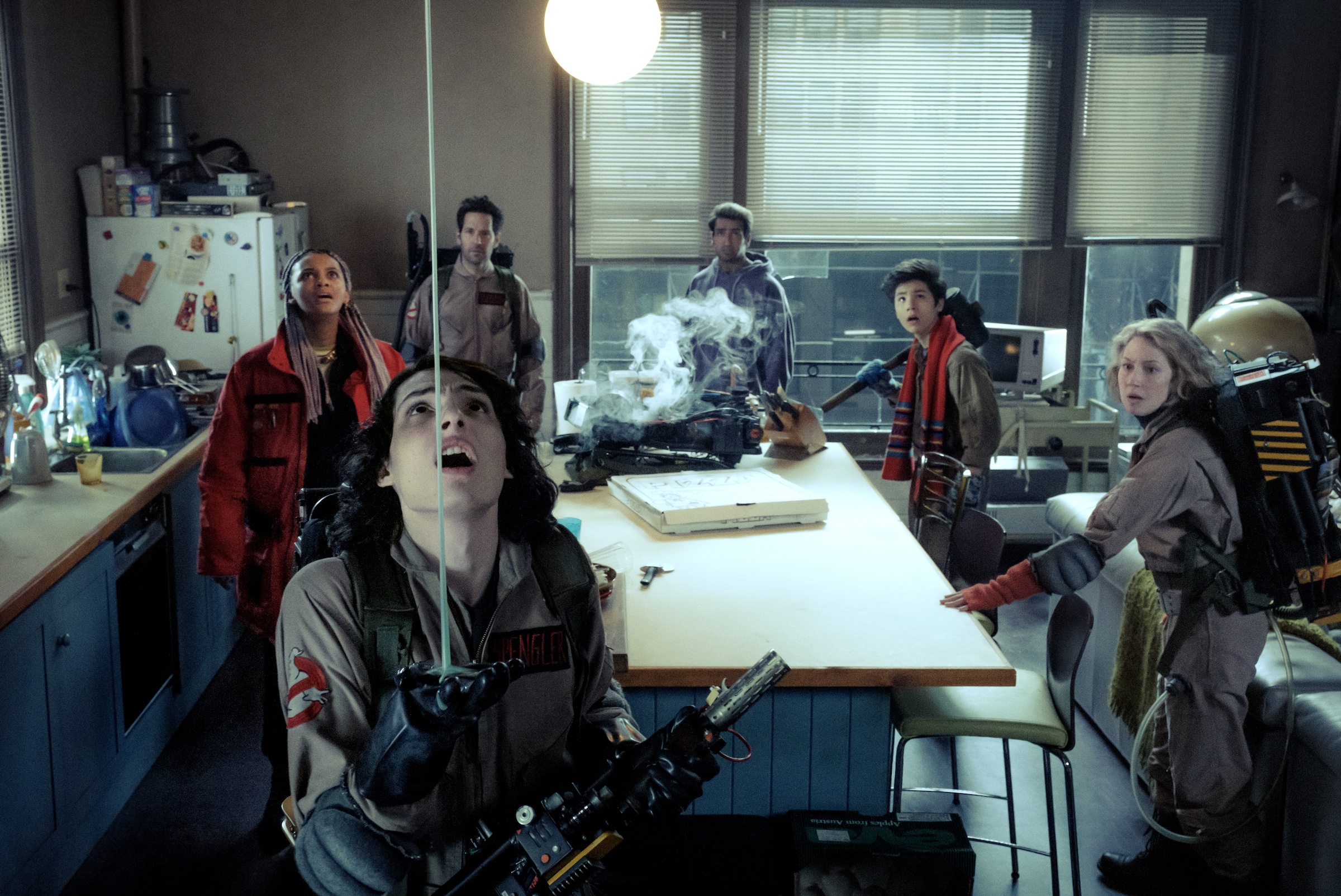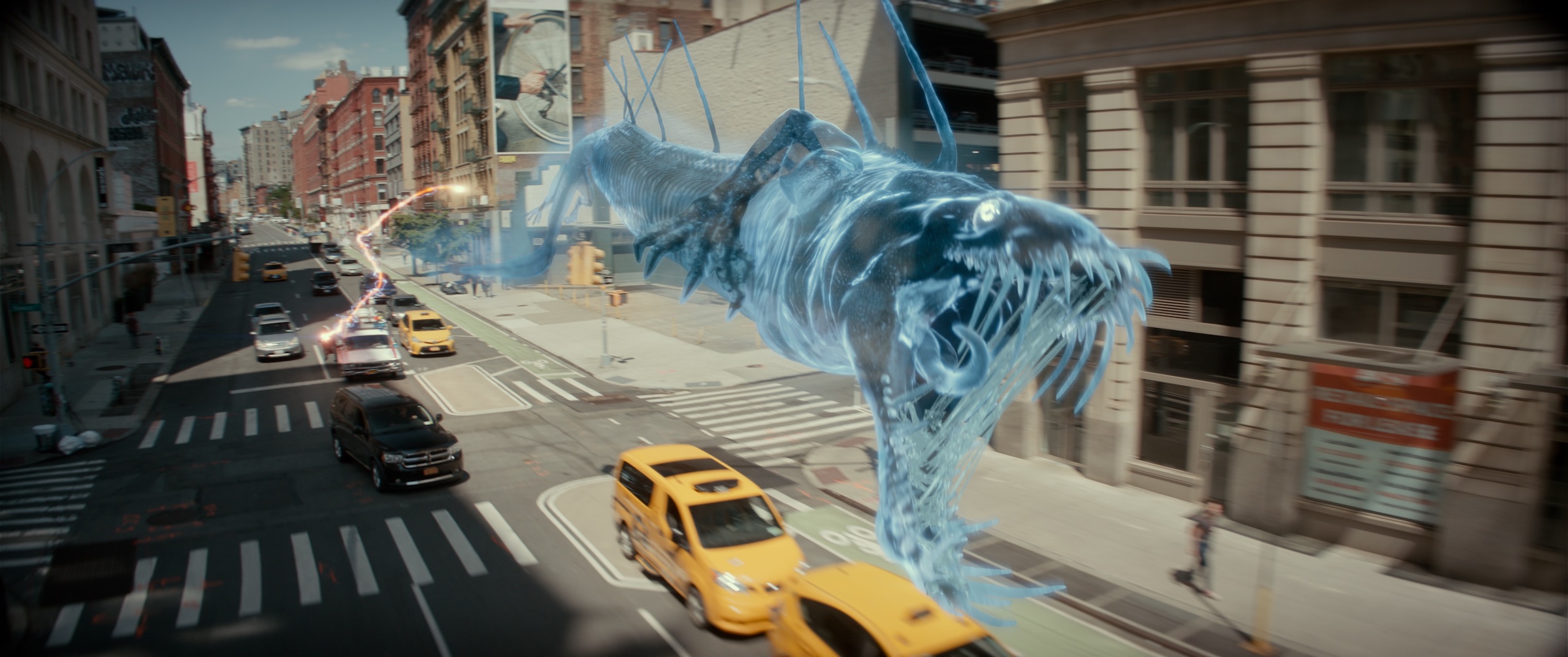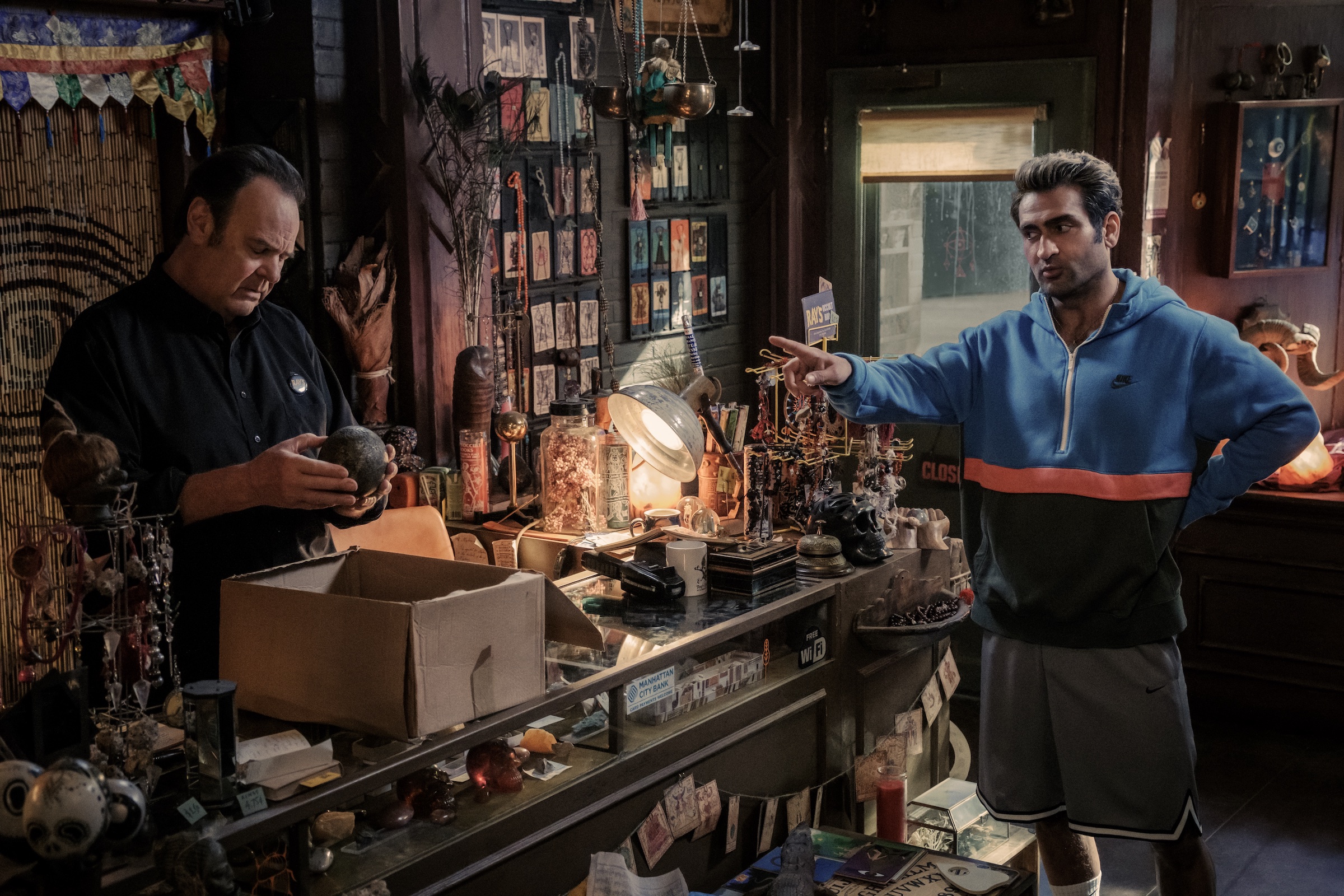
The problems with Ghostbusters: Frozen Empire begin with the movie’s name. The four previous Ghostbusters movies all had straightforward titles. There was the original, the aptly named Ghostbusters 2, the memory-holed 2016 movie (also titled Ghostbusters), and then Ghostbusters: Afterlife, which is a hair more clever but is a fittingly ghostly name for a legacy sequel. All of these titles make the titular Ghostbusters the focus. Frozen Empire, meanwhile, evokes something much larger, epic, and more ambitious—and it fully doesn’t fit with what this once-scrappy horror-comedy series is built to be.
It’s jarring to watch Frozen Empire, which is now in theaters, and to try to remember what the original, now 40-year-old movie actually was. Although the supernatural plot of the ‘84 Ghostbusters sounds fairly complex—an ancient god named Gozer the Gozerian needs two demigod servants to unite and use an occult building that’s a big spiritual antenna to unleash divine destruction—the lore all exists in service of the human-scaled plot. Ghostbusters is a grimy, unassuming comedy with geeky sensibilities and a mean streak. Peter Venkman, Ray Stantz, and Egon Spengler aren’t part of some hallowed legacy fulfilling an ancient prophecy. They’re just a trio of friends who start a business and end up saving the world. They were no more important than their actions made them out to be. But in the decades since, Ghostbusters has been put on a pedestal. It’s been elevated to the level of cultural touchstone—and, more recently, of being a tentpole intellectual property—and the Ecto-1 was simply not built to support all this.
Ghostbusters: Frozen Empire has the cast of faces introduced in Afterlife. The late Egon Spengler’s daughter Callie (Carrie Coon) and grandkids Trevor (Finn Wolfhard) and Phoebe (McKenna Grace) move from Oklahoma to Manhattan so they can continue working in the family business they only learned about in the last movie. Paul Rudd’s Gary, who is now dating Callie, joins them, as do secondary characters Podcast (Logan Kim) and Lucky (Celeste O'Connor), both of whom have pretty flimsy reasons for also having uprooted and relocated to the Big Apple. The old guard of Bill Murray, Dan Aykroyd, and Ernie Hudson are there, too, trapped in the uncanny valley between an A-plot and a side plot.

The Spenglers and Gary are bustin’ ghosts when Mayor Walter Peck (William Atherton, reprising his role from the original as the EPA inspector with a grudge against the Ghostbusters) orders them to sideline Phoebe because she’s a minor. While she gripes, a new character played by Kumail Nanjiani sells a haunted sphere to Ray (Aykroyd). We eventually learn that Garraka, an evil god with ice powers, is imprisoned inside, that Nanjiani is the last of a pyrokinetic line of warriors dedicated to stopping the god, and that Winston Zeddemore (Hudson) has built an advanced ghost research facility. When a humanoid ghost (rather than a grotesque creature like Slimer) played by Emily Alyn Lind tricks Phoebe into temporarily turning herself into a ghost so that she can free this ancient evil, a new ice age hits New York City and all the Ghostbusters must join forces to save the day.
There’s a lot going on, and that’s not even mentioning a trip to the New York Public Library where Patton Oswalt shows up to explain a bunch of complex history involving ancient empires and evil gods. Despite the great lengths Frozen Empire goes to in order to make the Ghostbusters’ latest supernatural threat seem like a unique new creation, it feels like a generic plot better suited to a late-stage Marvel movie. The Ghostbusters are superheroes now, but whereas even the lesser MCU movies try to be character-driven, it never feels like the Ghostbusters are in the driver’s seat of their own movie. Instead, they’re just swept up in all this nonsense as it happens to them—a sharp contrast from the original films. Ghostbusters was a comedy with a big kooky plot whereas Frozen Empire leads with its big, not-especially kooky plot and makes everything else secondary.
Perhaps in an attempt to make the Ghostbusters feel as though they have as much lore as the movie’s villain, Frozen Empire keeps adding new retconned details to the original film. The firehouse that the team operates out of, for instance, is revealed to have been chosen as the HQ because it has great spiritual significance, and the opening scene in the early 1900s has a team of horse-drawn firefighters leaving this very same firehouse to respond to Garraka’s first attack. Never mind that in the ‘84 Ghostbusters, Egon Spengler said the dilapidated firehouse was not at all suitable for their needs and it was only because Ray liked the firepole so much that they chose it.

Even the fan service (which there’s a lot of) attempts to elevate moments of recognition into lore. When Rudd recites the Ghostbusters theme song lyrics to Coon, he’s making them into a mantra of great importance rather than lines from a commercial. Murray’s Venkman is delighted to see that Annie Potts’ receptionist, Janine Melnitz, is “finally” in the Ghostbusters uniform, as if her getting out from behind the desk was some long-overdue prophecy that Frozen Empire finally fulfilled. The Stay Puft Marshmallow Men are consistent with supernatural pests rather than a one-off advertising mascot-turned-kaiju. Very few things from the original films are allowed to just be what they were. Instead, they’re part of some greater canon.
This type of “it’s all connected, everything matters” lore can work for big fictional universes, but it’s an odd fit that cheapens the spirit of Ghostbusters, a movie about some oddball friends who fight spooks. This disconnect is present in Afterlife, too, but at least that movie could spin its franchise revisionism into a legacy sequel that worked as a coming-of-age story. The earnest halcyon Americana of Afterlife isn’t anything like the original movie, but it works on its own terms.
Frozen Empire has none of that. Instead, it’s just a bunch of ghostly gloop with nothing solid to possess. Ghostbusters has become too interested in lore—both the invented fictional history necessary for the team to have a new bad guy to fight and the franchise’s place in real-life pop culture—to have space to make bustin’ feel good.
More Must-Reads from TIME
- Inside Elon Musk’s War on Washington
- Meet the 2025 Women of the Year
- The Harsh Truth About Disability Inclusion
- Why Do More Young Adults Have Cancer?
- Colman Domingo Leads With Radical Love
- How to Get Better at Doing Things Alone
- Cecily Strong on Goober the Clown
- Column: The Rise of America’s Broligarchy
Contact us at letters@time.com